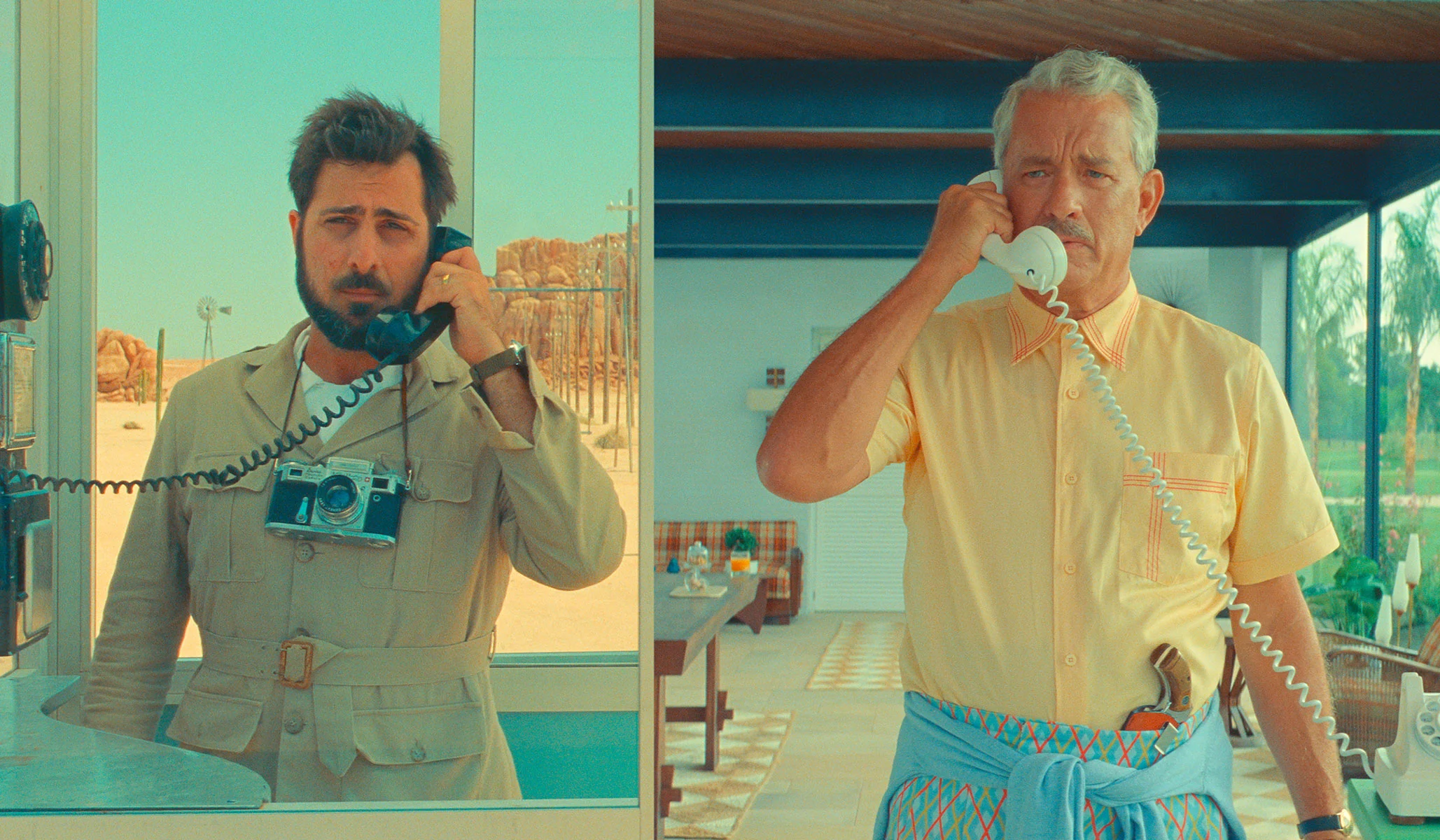Wes Anderson’s latest film, Asteroid City, is a period piece set in 1955 that explores escapism and nostalgia. Although these concepts were central to Anderson’s earlier films, such as Rushmore, The Royal Tenenbaums, The Life Aquatic, and The Darjeeling Limited, the sentimentality and need for retreat in Asteroid City make it seem precious and limited. However, the film still manages to express something genuine, as it is superficially superficial, to borrow a phrase from Max Ophuls.
The film introduces Anderson’s vision of the 1950s through alienated artists, playwright Edward Norton and TV commentator Bryan Cranston, who attempt to define their place in the era through a documentary program about theater. The documentary turns into a big-screen performance piece, a movie within a movie, as broken families and a busload of tourists and school kids visit a Midwestern military bomb-testing base that was established where an asteroid had penetrated the atmosphere, leaving a large, mysterious crater, thus Asteroid City. The base and tourist site are operated by government personnel and local entrepreneurs whose particular customs and habits reflect back the private and cultural obsessions initially introduced.
The film’s deliberately eccentric, pastel vision is so overtly stylized that it nearly distracts from the poignant domestic complications that used to be Anderson’s special insight into human relations. Asteroid City combines the suspense of playing a family board game with TV lore, featuring meticulous animated details. Each transition is presented in a different screen size, and separate sequences emphasize the multimedia contrivance, including title-cards and intermission as at a theater program.
Despite the all-star cast, which includes Norton, Cranston, Scarlett Johansson, Willem Dafoe, Jeffrey Wright, Adrien Brody, Jason Schwartzman, Tilda Swinton, Liev Schreiber, Margot Robbie, and Tom Hanks, Anderson retrieves the signature farcical context that once felt profoundly personal. The fact that everything looks toylike and distanced in Asteroid City might be the point of that Atomic Age sci-fi title, recalling an America under threat of the Bomb, yet emotionally blasted — alienated — by insecurity and faithlessness. Anderson uses the accoutrements of childhood to convey the sense of a haunted, spiritually vacant country.
Think of Asteroid City as a stylized hypothesis concocted to scrutinize the state of a fallen society. The best scenes, including Schwartzman and Hanks grieving while “saying the same thing,” a father and son truly recognizing each other for the first time, an actress and a photographer revealing themselves at a distance, an actor envisioning his departed soul mate, and brainiac kids trying out their smarts, are among Anderson’s finest. They’re breathtaking moments that piece back together the pure, childlike innocence we miss now more than ever.
When sequestered vacationers are notified that “the president lifted the quarantine,” Anderson’s reference to the Covidapocalypse is culture shock. It is more effective than Baumbach’s failed adaptation of Don DeLillo’s White Noise and better than the nihilistic sci-fi of Jordan Peele’s Nope.
An American visionary, Anderson embraces his bourgeois adolescence with poetic accuracy. These uncanny instances also reveal the uneasy experiences and sensitivity that various characters articulate as “tragic calamity” and “strategically wounded.” Anderson had made that subtext too obvious in the slightly smug Moonrise Kingdom and the preening nastiness of The Grand Budapest Hotel.
No doubt the psychic wounds of the Covidapocalypse necessitated that Anderson create a fresh cosmology, like his witty fantasy of Broadway marquees: Death of a Narcissist, Circle the Wagons, Fruit of a Withering Vine, Asteroid City. In the film’s curtain-call finale, Actors Studio hopefuls chant and repeat “You can’t wake up if you don’t fall asleep.” Anderson’s story-time nostalgia salutes guilelessness and yearning.

